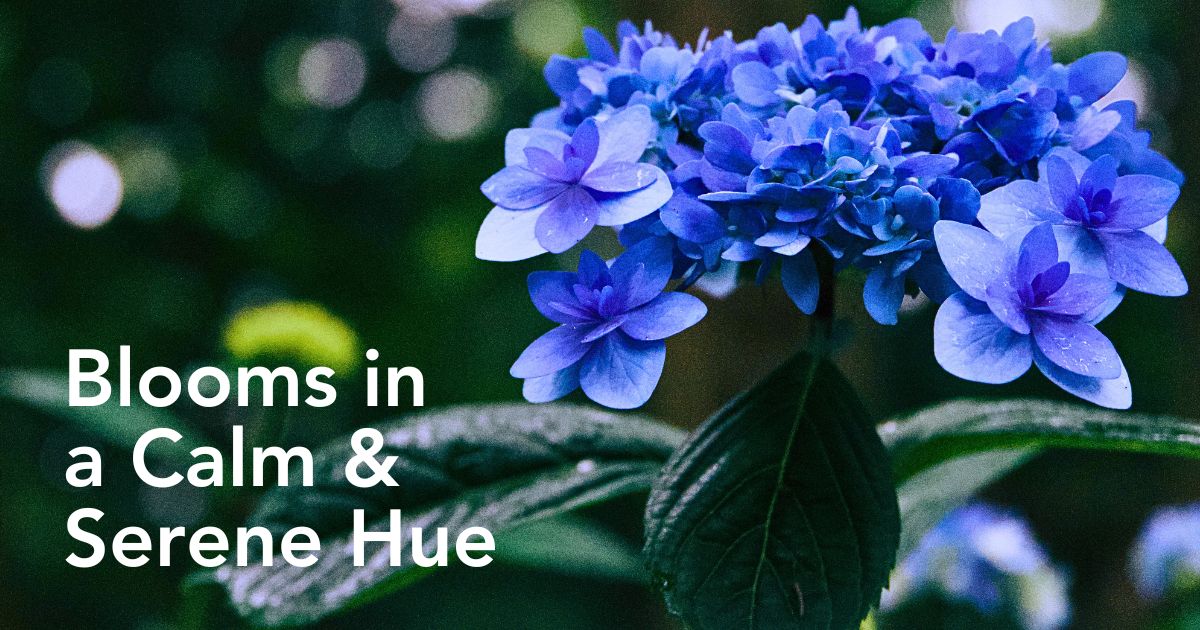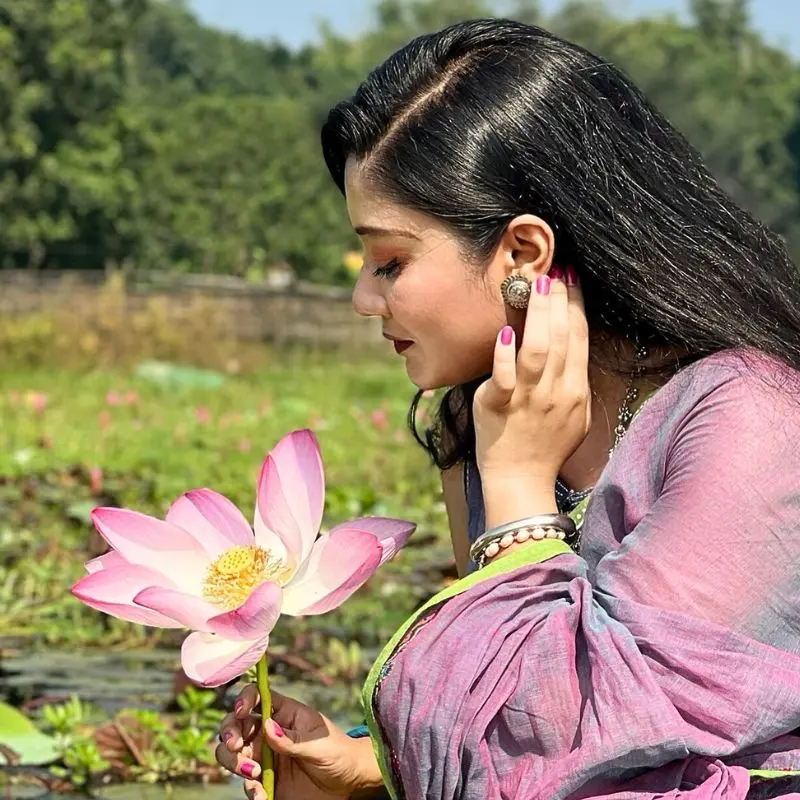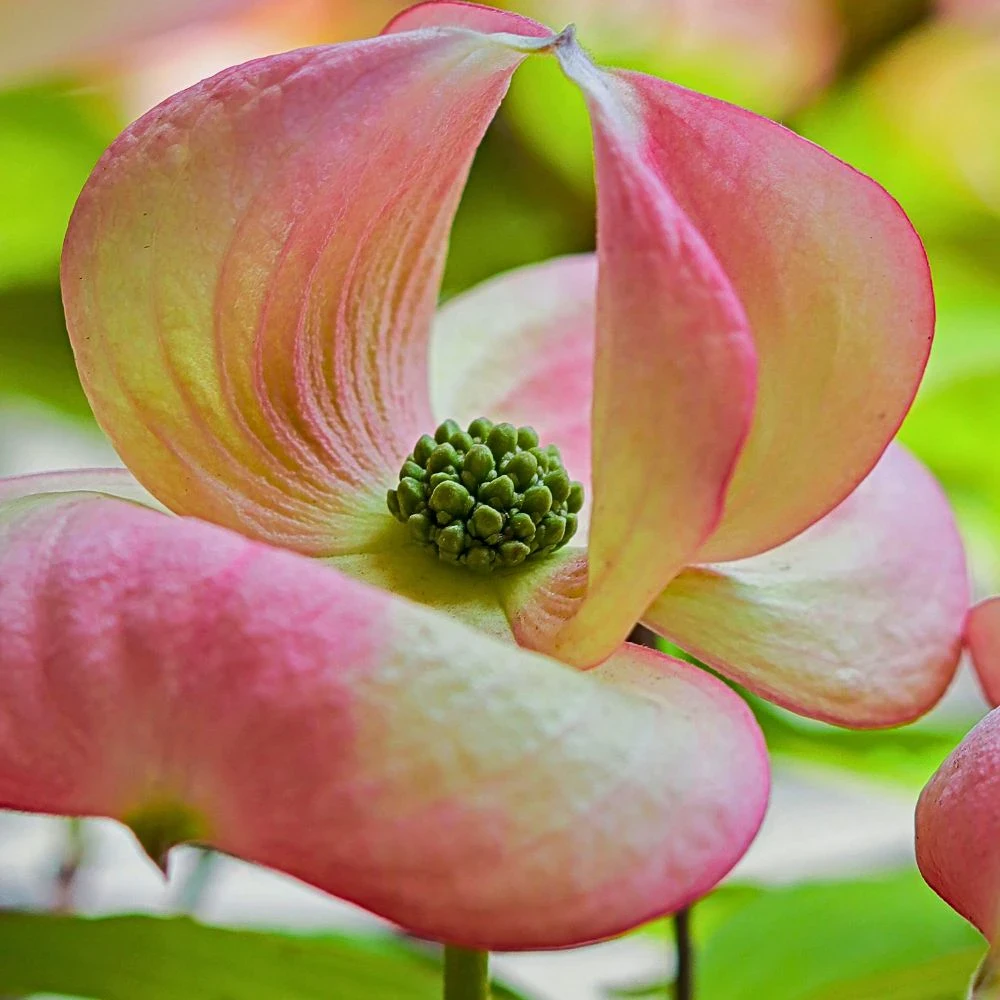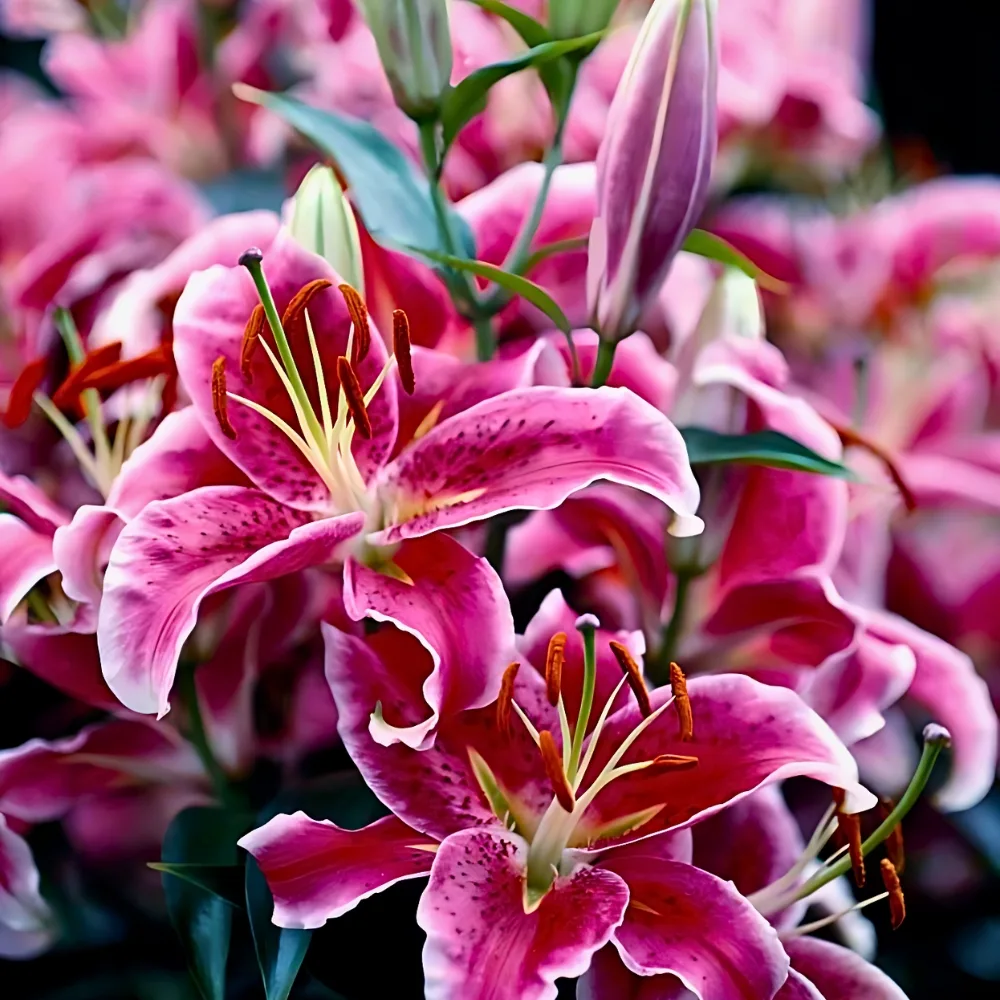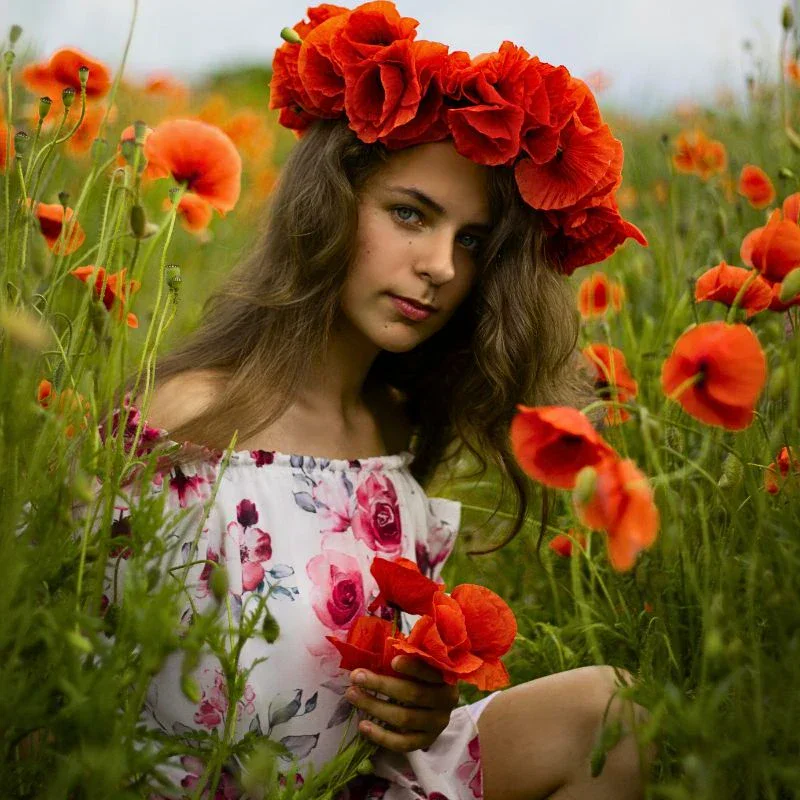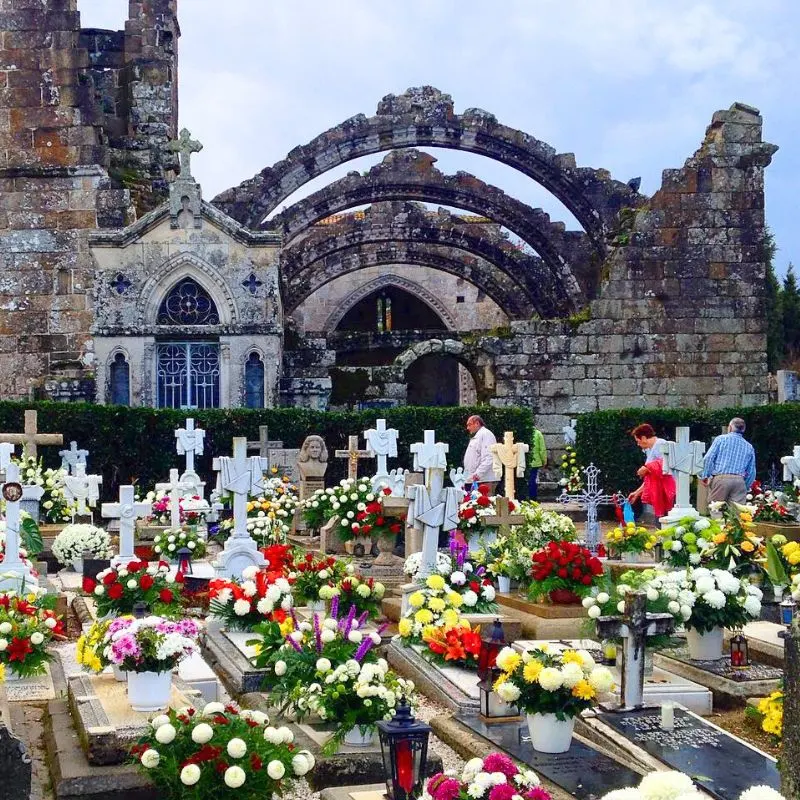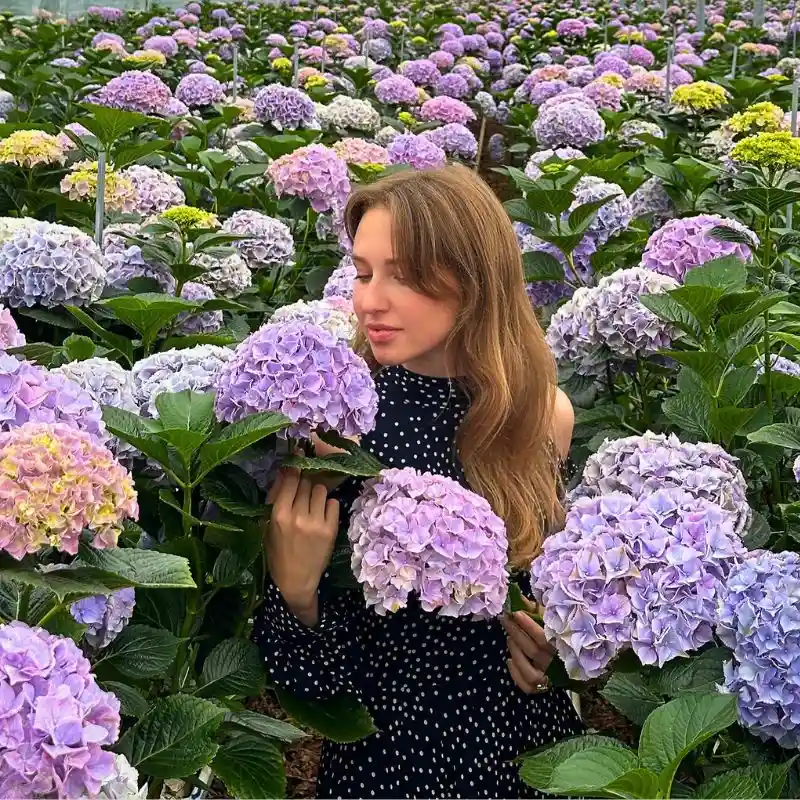Blue color has influenced art, mythology, and popular culture throughout history. From serenity and tranquility to masculinity and sympathy, this color expresses various meanings across different cultures. The rarity of blue flowers makes them all the more significant, both in the natural world and in the language of flowers. According to floriography, blue flowers symbolize desire, love, and inspiration. They represent the metaphysical striving for the impossible.
These flowers are also said to induce clarity, serenity, tranquility, and peace. While red roses speak of romance, and white blooms signify purity and innocence, blue flowers indicate trust in the constancy of love, as a meaningful commitment to endure for years. As well as being a traditional symbol of love, the significance of blue in flowers stretches across various cultures and religions, from the ancient Egyptians to the Victorians.
The Blue Flower, A Richly Symbolic Flower
The blue flower, or ‘Blaue Blume’ in German, has been a central symbol of inspiration for the Romantic movement. Presented by the German author Novalis in his unfinished novel ‘Heinrich von Ofterdingen,’ the blue flower became a hallmark for the romantic ideals of longing, desire, and the conjectural striving for what is unattainable.
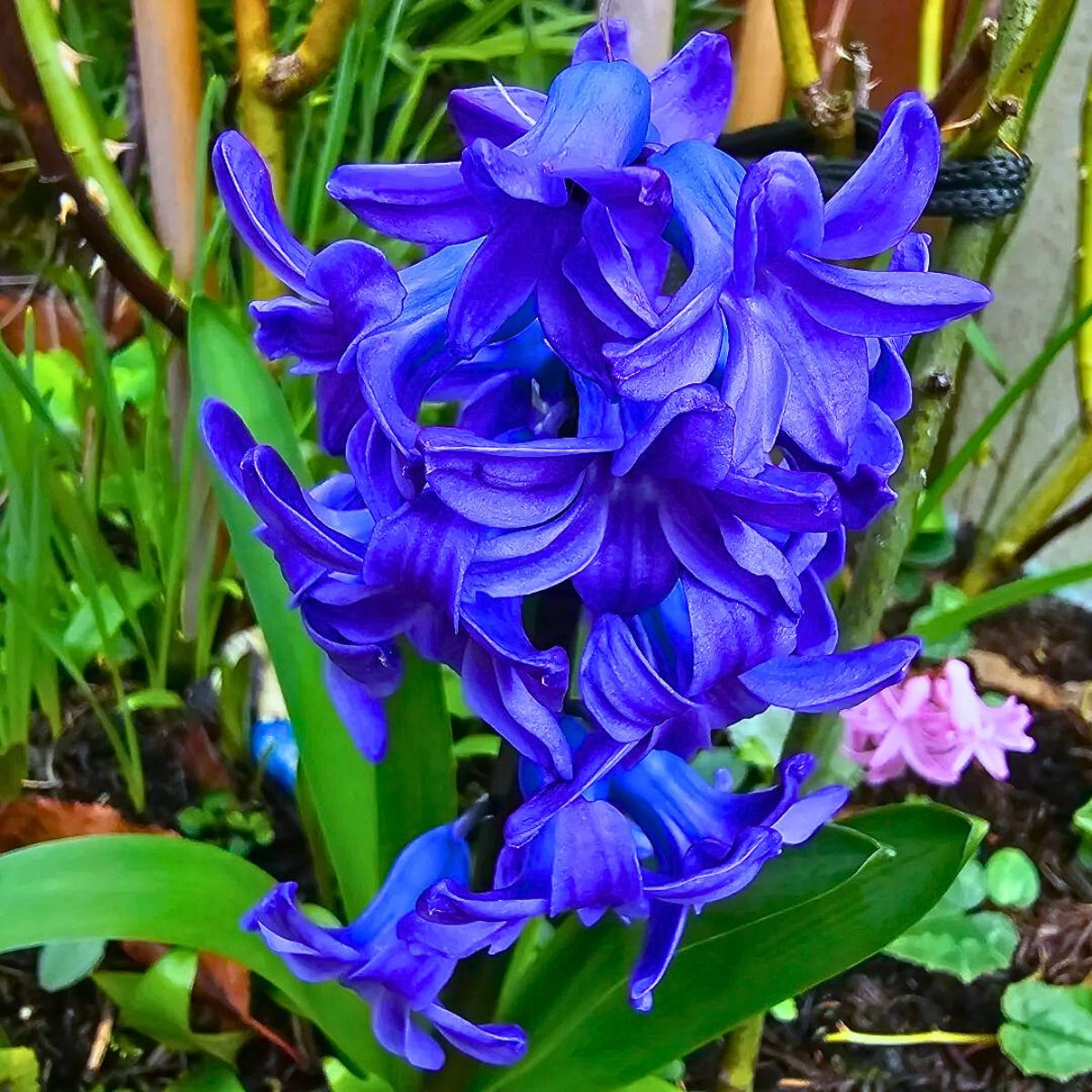
Photo by @diane.hodson.63
Hjalmar Hjorth Boyesen, a Norwegian-American author, eloquently described the blue flower:
“It is meant to symbolize the deep and sacred longings of a poet's soul. Romantic poetry invariably deals with longing; not a definite, formulated desire for some obtainable object, but a dim, mysterious aspiration, a trembling unrest, a vague sense of kinship with the infinite, and a consequent dissatisfaction with every form of happiness which the world has to offer."
The blue flower’s practically omnipresent symbolism has continued to be a source of imagination and inspiration for writers, artists, and thinkers throughout the centuries. From British writer, literary scholar, and Anglican lay theologian, Clive Staples Lewis' references in his autobiographical work ‘Surprised by Joy’, to their use in today’s popular culture.
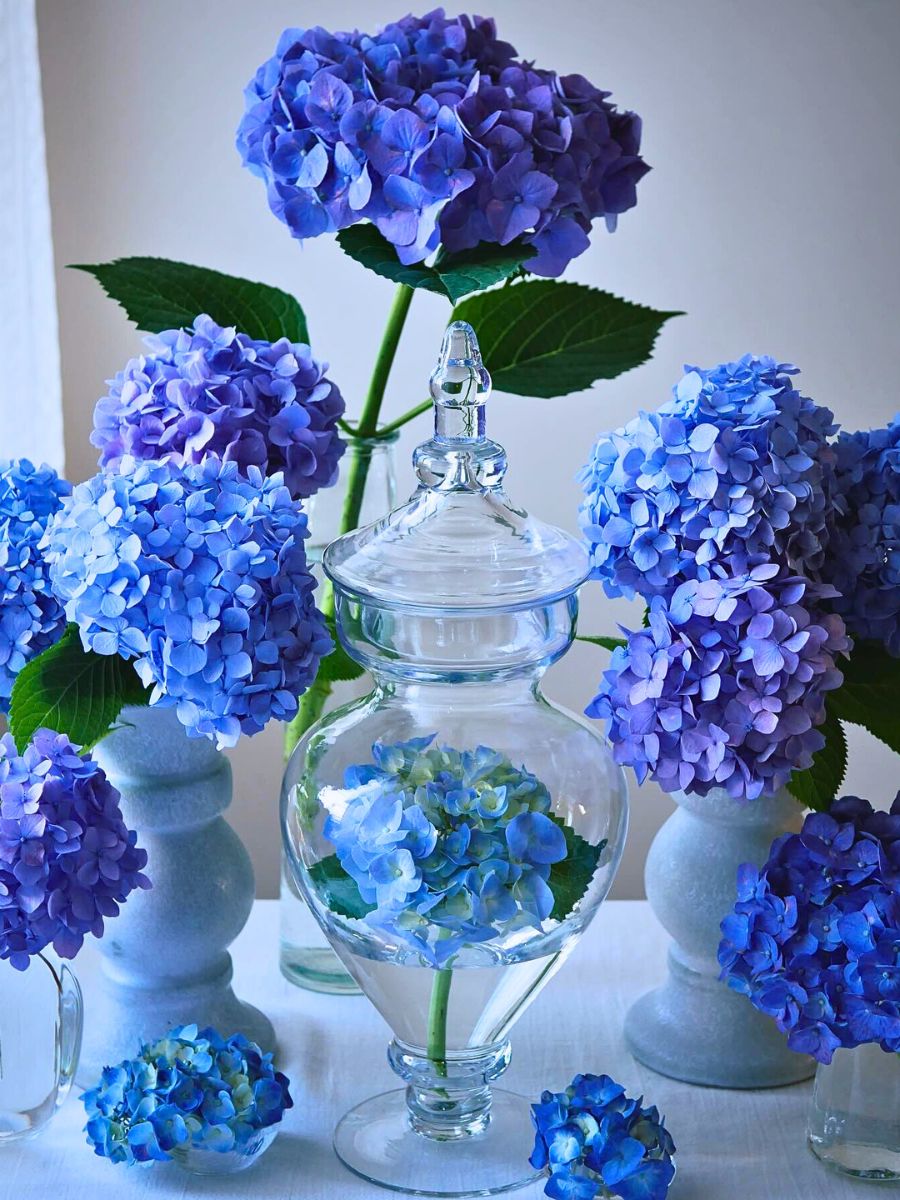
Photo by @u_chibito
In contemporary pop culture, for example, blue flowers appear in various films and television series, often as a figurative representation of the unattainable or the mysterious. In the movie ‘Batman Begins’ for instance, a rare blue flower grows on the mountainside en route to the League of Shadows training temple. In contrast, in the works of American author, television writer, and television producer George R.R. Martin, blue roses feature prominently in the ‘A Song of Ice and Fire’ series. Here, the blue flower remains a potent and evocative metaphor for the human longing for the divine and — often — the unattainable.
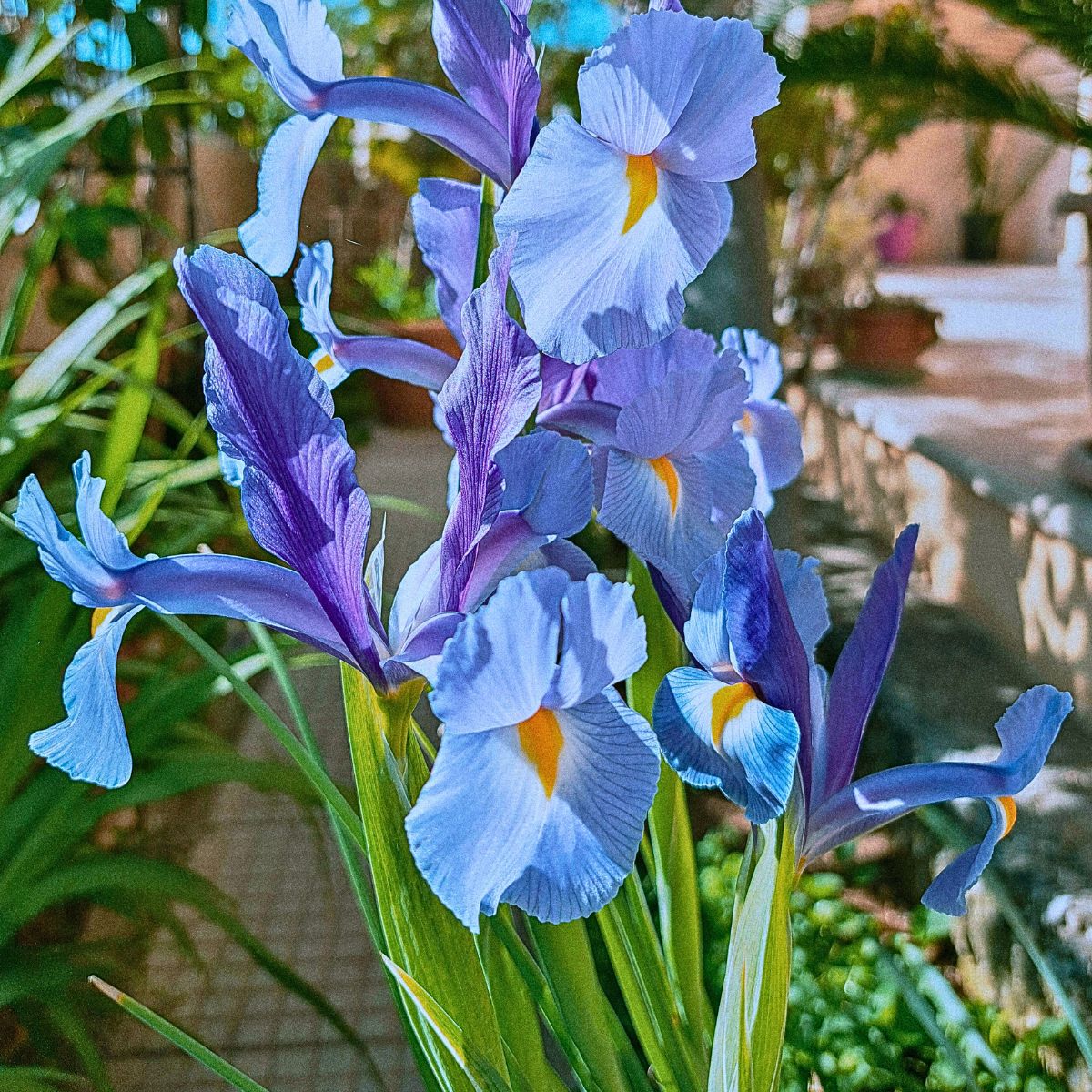
Photo by Isaiah53
You can also read all about the forget-me-not flowers; one of the most unassuming yet glorious blooms that carry a deep message of remembrance and that of lasting love. Sky blue is one of the two Thursd trend colors for the year 2024.
What Is the Meaning of Blue Flowers?
What is a blue flower's meaning? While blue flowers have generally become a symbol of romantic longing, their inherent meaning extends far beyond this singular interpretation. Across cultures and throughout history, blue flowers have been richly permeated with symbolism and significance.
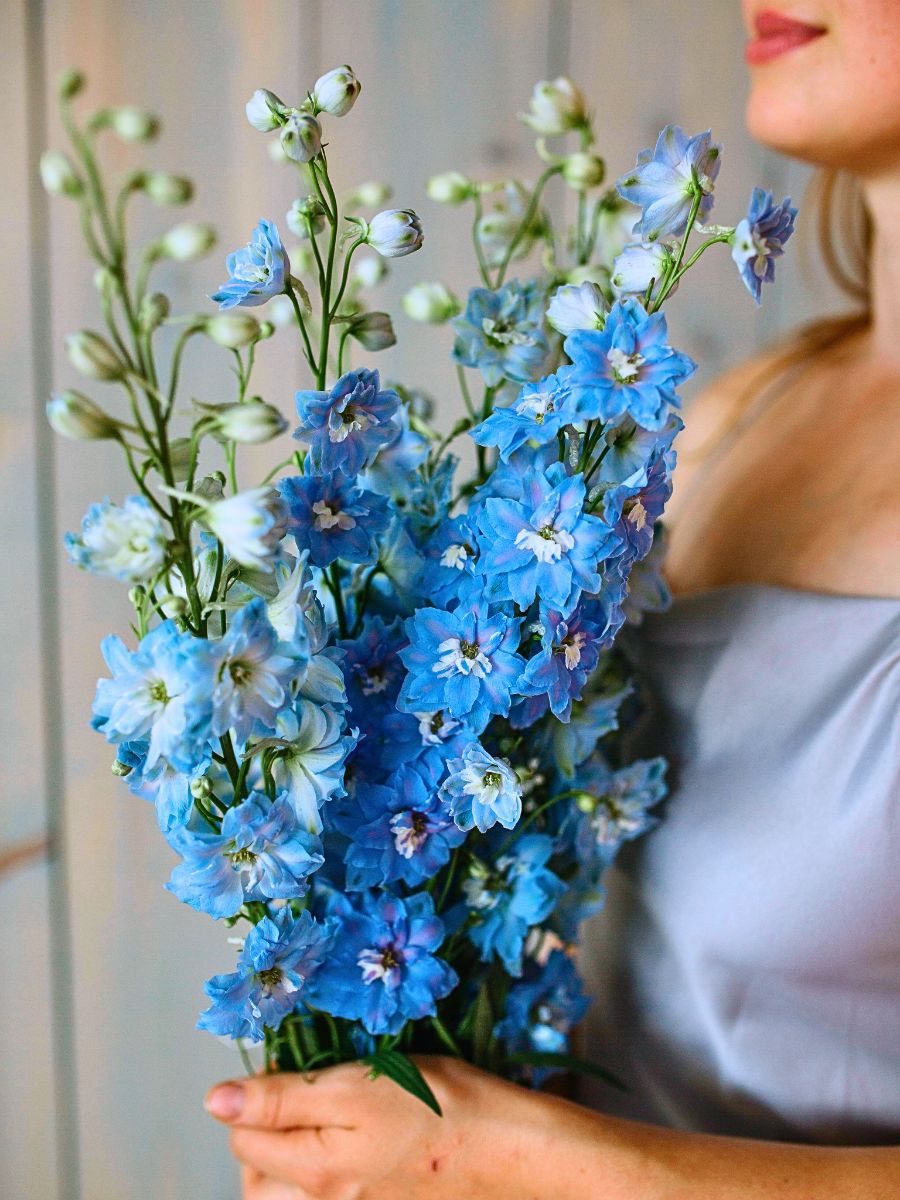
In many traditions, they are associated with trust, loyalty, and commitment. Sending blue flowers to a loved one could be a message of dedicated devotion and the desire to keep the romance alive for years. Blue flower meanings also encompass their symbolism of hope and support. Thus, when you send blue flowers to someone, especially one going through difficult times or needing reassurance, they come out as a caring gift.
The calming and soothing nature of the color is also reflected in the symbolism of the flowers. These blooms are often seen as having a tranquil effect. They help to promote feelings of relaxation and inner peace. As such, blue flowers can be a perfect addition to any space, providing a calming and grounding presence.
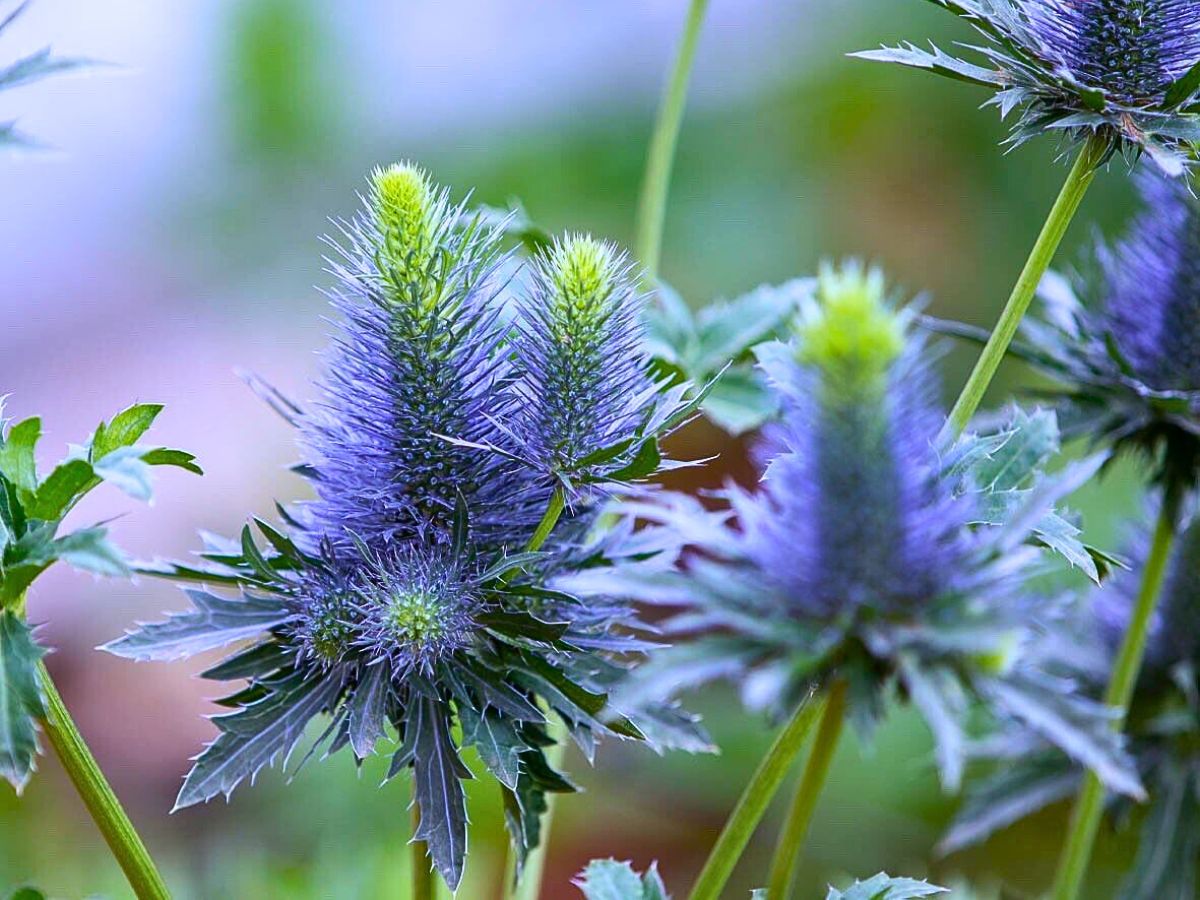
Photo by @marginpar
Aside from these more general associations, different blue flowers have unique meanings and cultural significance across different cultures. For instance, blue roses, one of the rarest and most sought-after blue flowers, are often associated with the idea of the impossible or unattainable. They represent mystery, intrigue, and the pursuit of the extraordinary. It is no wonder there are hardly any true naturally occurring blue roses.
Blue hydrangeas, on the other hand, represent prosperity, grace, and beauty. These traditionally, fourth-anniversary flowers produce large heads of many smaller flowers. The big, sky-blue hydrangea blooms are a stunning addition to any garden or arrangement. In Japanese culture, the blue hydrangea represents forgiveness and honest intent. In some cultures, they are also used to express disinterest in a romantic proposal. Does the pursuit of the unattainable still ring a bell?
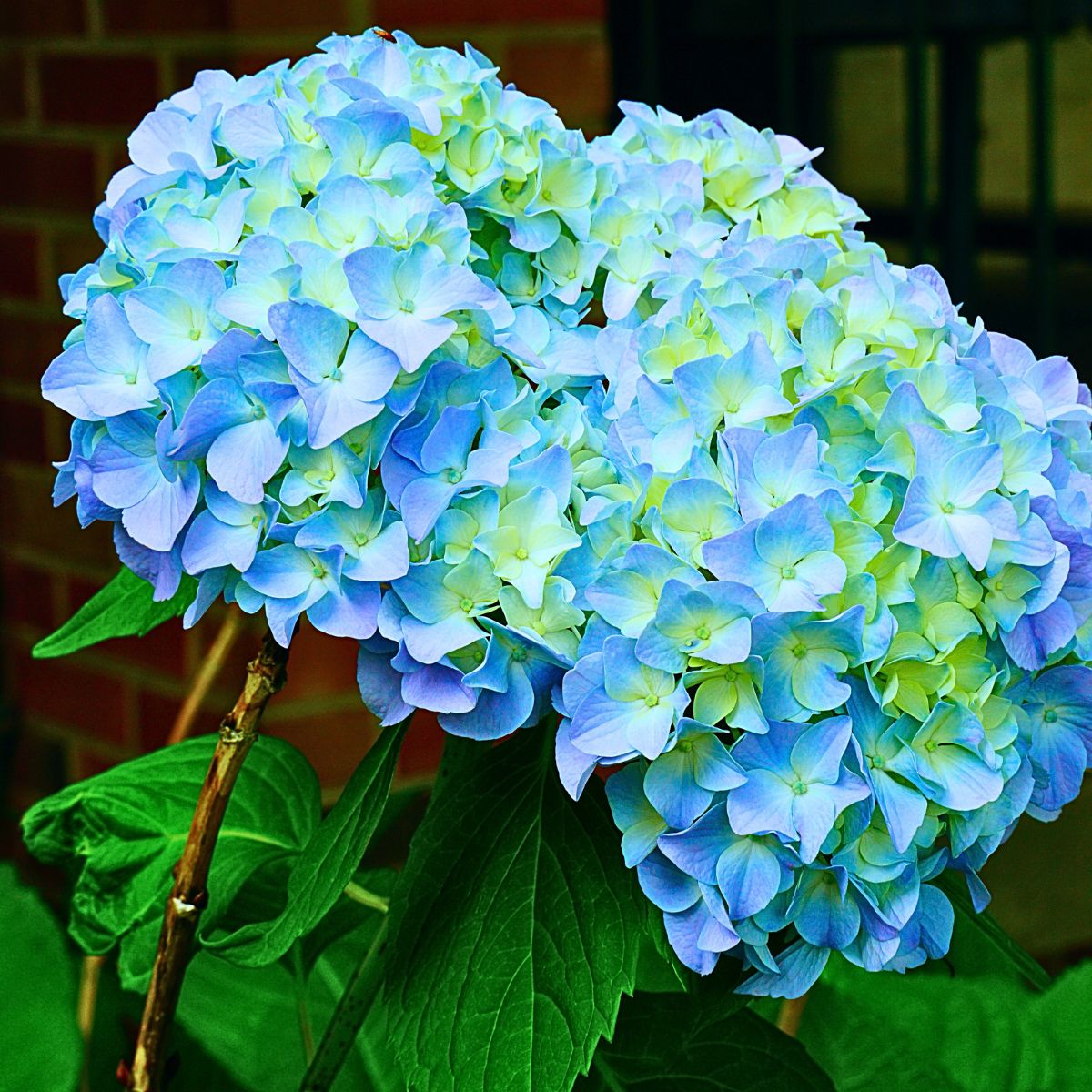
Photo by daledbet
On their part, blue delphiniums, the tall, stately flowers, symbolize new opportunities, expansion, and the celebration of positive events. The unique shape of these flowers, reminiscent of a leaping dolphin, adds to their symbolic significance. Their name, derived from the Greek word for dolphin, reflects the dolphin-like shape of the blooms. Blue delphiniums also symbolize strong attachment.
Clematis, a climbing blue flower, represents — depending on the culture — loyalty, courage, and intellect. This blue flower also epitomizes a deep and passionate love that knows no bounds. Its bright and lively blue color is associated with trust, loyalty, and faithfulness.
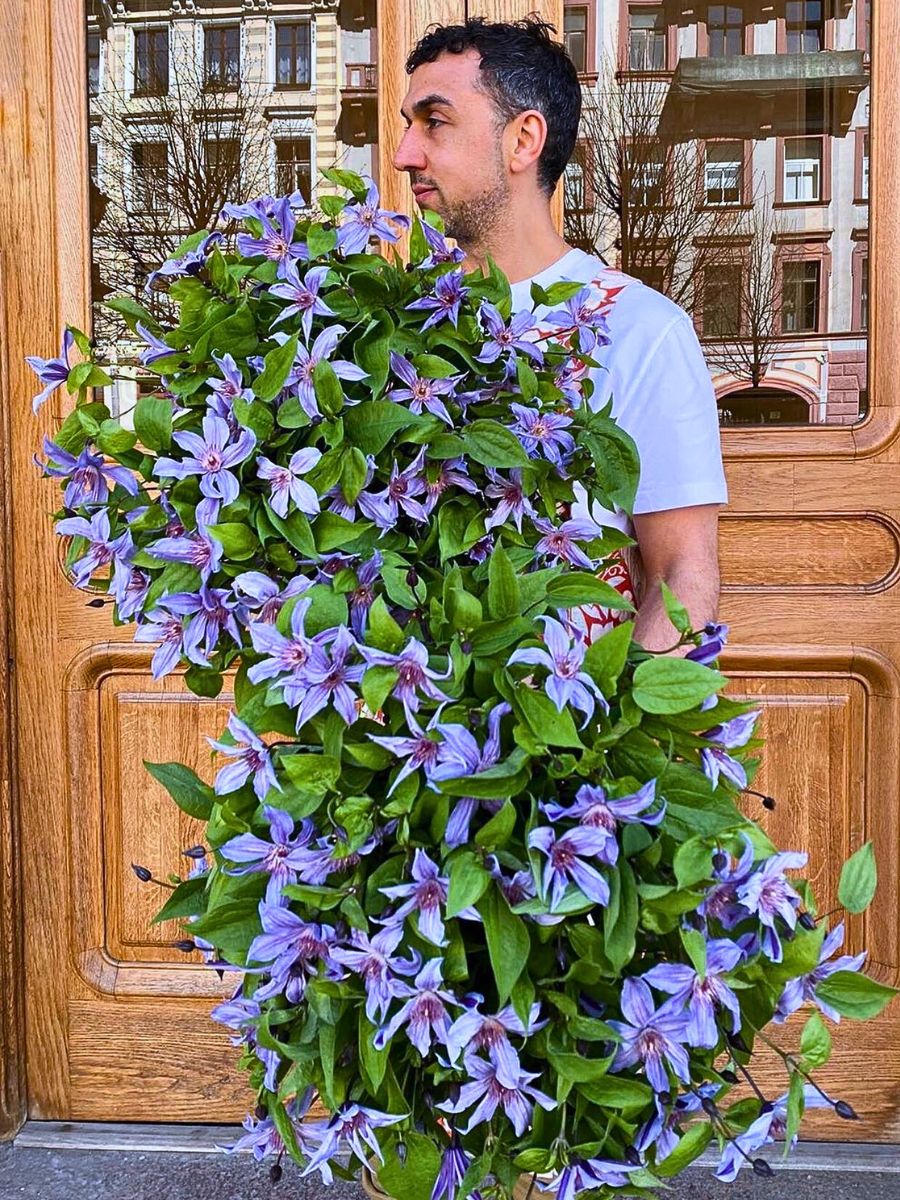
Photo by @marginpar
The star-shaped blue asters represent patience, elegance, peace, and the concept of an afterthought and wishing things could have gone differently. Irises often grow atop attractive, grass-like leaves, and their 'showy blooms' appear in May and last well into June. The bearded iris, in particular, comes in nearly every shade of blue. When gifted, these blue irises symbolize love and deep trust.
Cornflowers, called bachelor’s buttons, are annuals with ruffled, bright blue blooms attracting bees and butterflies. These flowers symbolize affection and are usually perfect for adding brightness to a garden. Others, including hyacinths, the bulb-shaped blue flowers, are associated with joy, rebirth, and the expression of trust and sincerity in relationships. Bellflowers, also known as Campanulas, symbolize humility, reverence, and a connection to the fairy world.
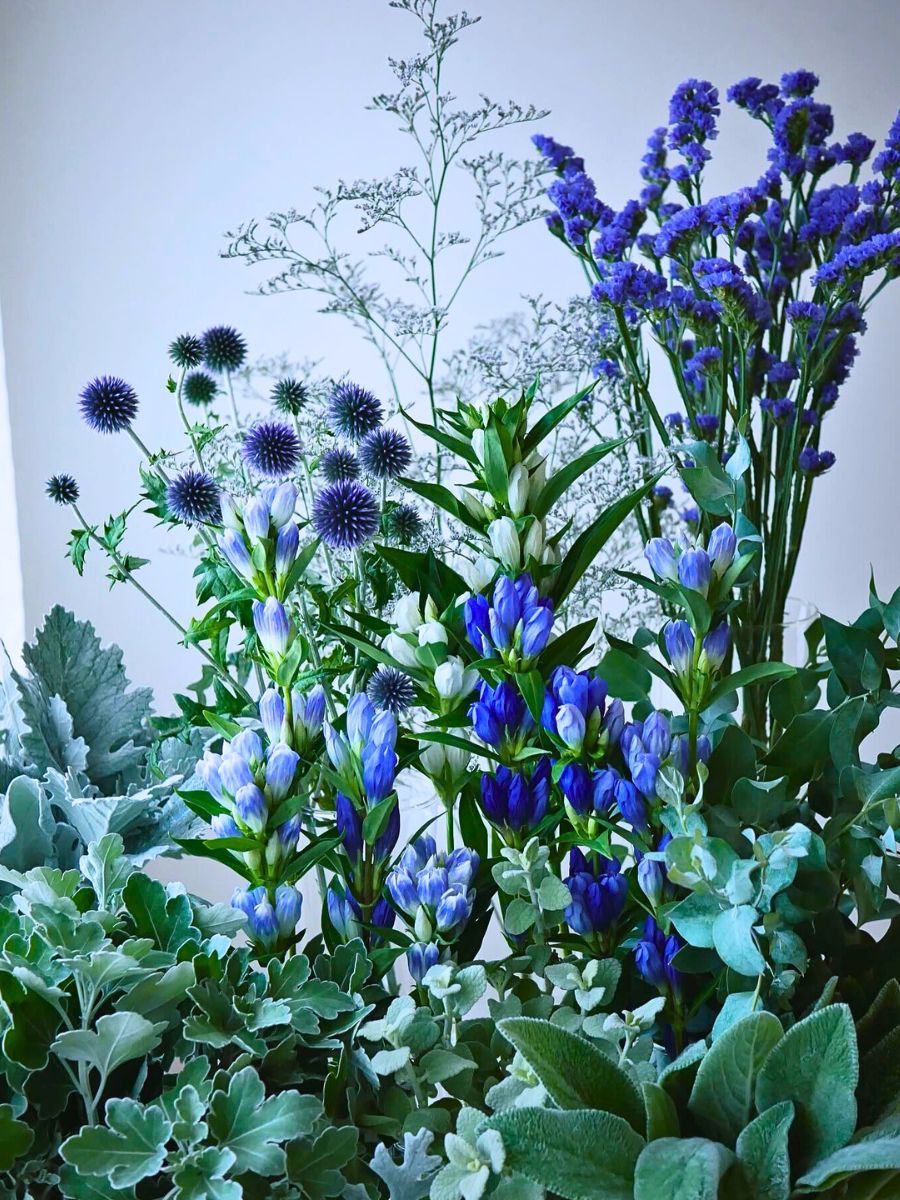
More blue flowers hold different meanings and symbolism; thus, in understanding their diverse cultural associations, one gains a much deeper appreciation for the richness and complexity of their symbolism.
Blue Flower Meanings in History and Other Cultures
Blue flowers have embellished myths, literature, and artworks across centuries and cultures. Their rare beauty has fascinated artists and writers, from Goethe to Pulitzer Prize-winning playwright Tennessee Williams.
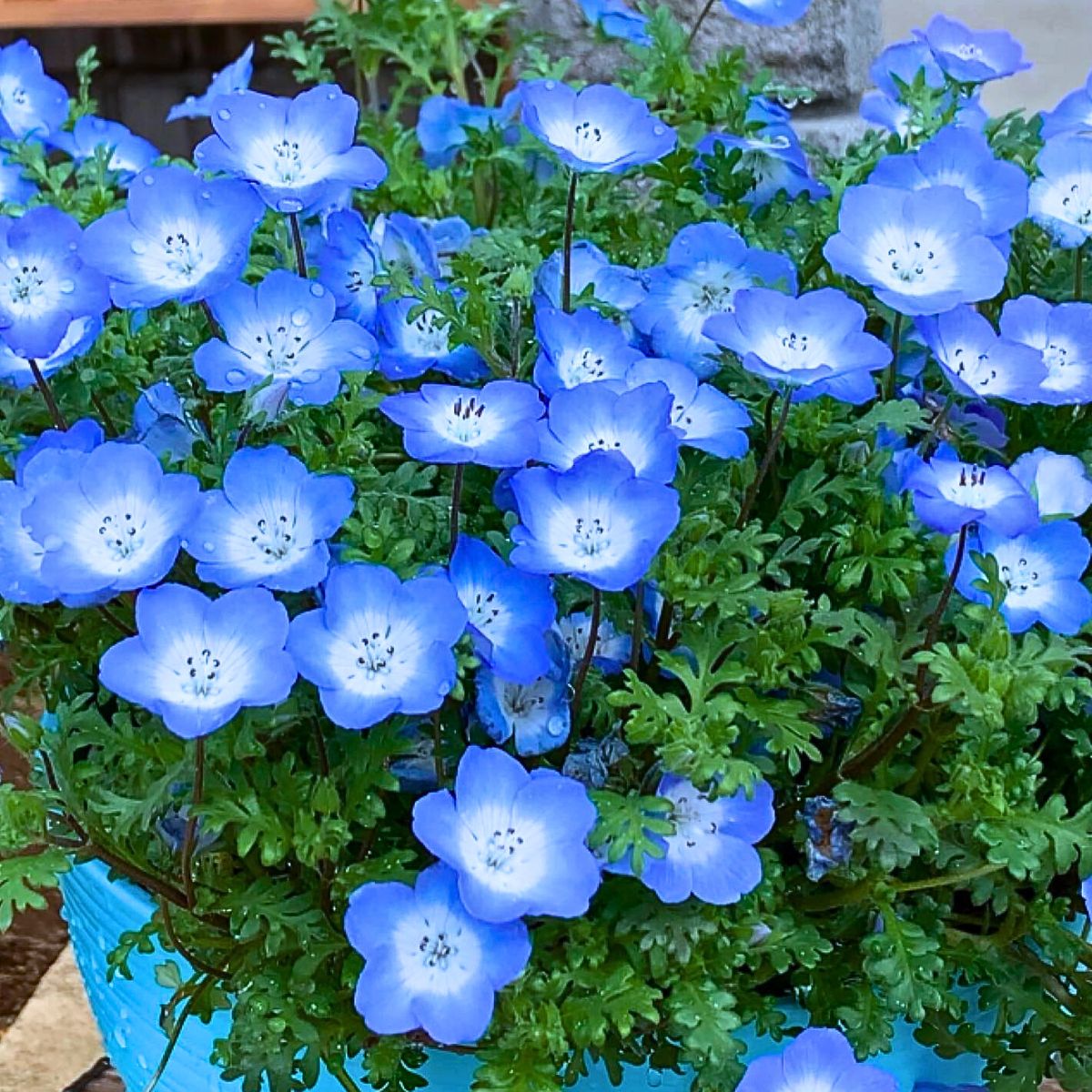
Photo by @gizmo.1227
Ancient Egypt, Greece and Rome
Blue flowers were considered sacred by the ancient Egyptians. The blue water lily, or blue lotus, held special significance, featuring on pillars, alters, and arches of many temples. In Egyptian mythology, the blue lotus symbolized rebirth and the sun and was also ingested for its euphoric and hallucinogenic effects.
The ancient Greeks and Romans also highly regarded blue flowers. Aconitum, also called monkshood or wolfsbane, was, for instance, dipped in the tips of arrows to slay wolves and featured in Ovid's myths. The blue iris was gathered by the goddess Persephone, and the delphinium figured in several myths and was sacred to the god Apollo. Pliny the Elder named the blue borage flower 'Euphrosinum', meaning merriment, and believed it cured depression.
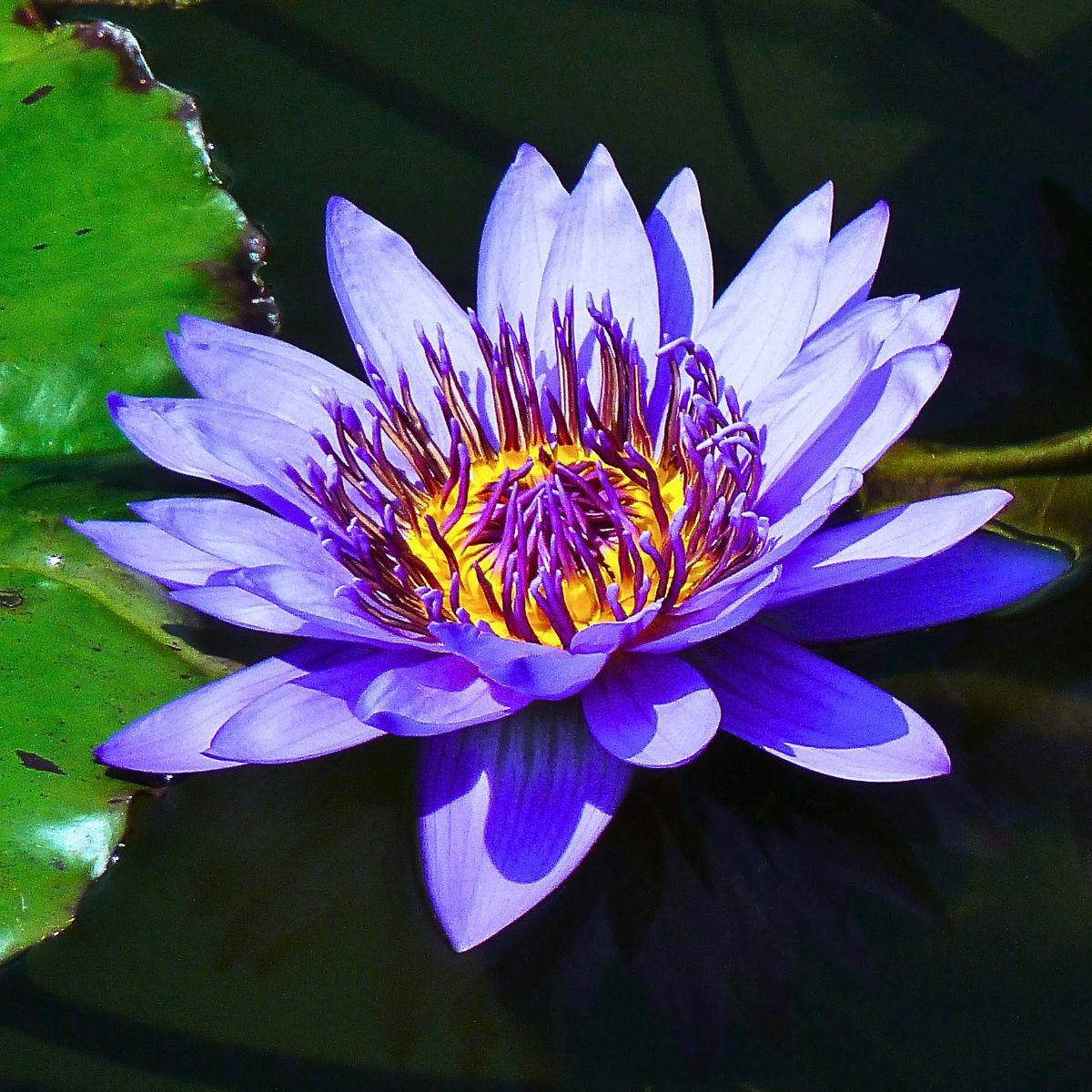
Photo by harveygardner
In the 1700s and Victorian Times
To the Victorians, blue flowers held various meanings. Depending on the type of flower, they could symbolize affection, desire, love, inspiration, trust, purity, tranquility, or sympathy. Blue flowers were also a central symbol of the Romantic movement. They represented hope and inspiration and signified a striving for the unachievable.
Blue Flowers in Art and Literature
Blue flowers have made numerous appearances in famous works of art and literature. Dutch Post-Impressionist painter Vincent Van Gogh painted blue flowers, including irises, and Goethe wrote of a search for the 'original plant'. Tennessee Williams' play The Glass Menagerie features blue roses as a symbol of fragility, and several of Robert Frost's poems also feature blue flowers. In the same way, contemporary authors such as Penelope Fitzgerald and John le Carré have referenced blue flowers in their novels.
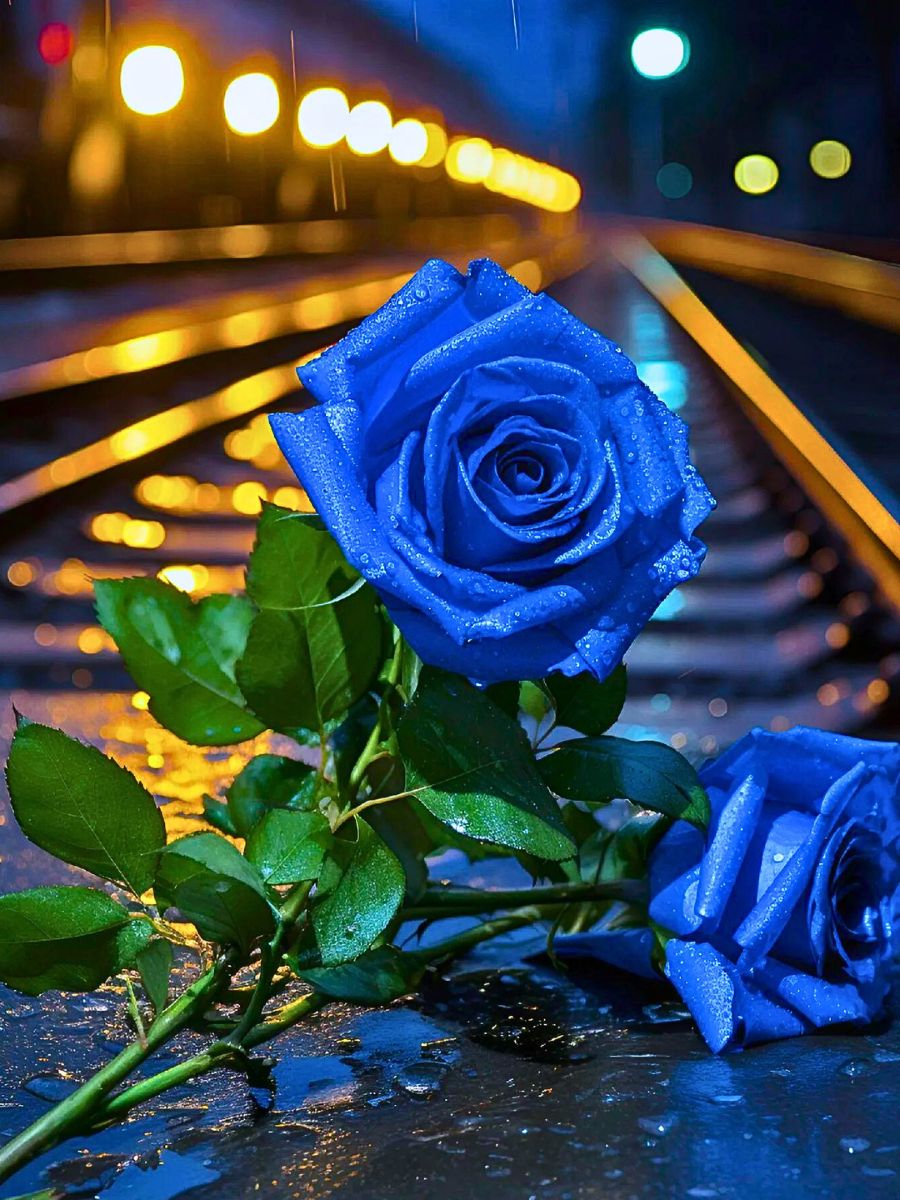
Photo by @naturefarver.
Spiritual Significance of Blue Flowers
Blue flowers' spiritual significance is also multifaceted. Their association with the fifth chakra's water element represents how spiritual practices, including meditation and prayer, can nurture the soul. Blue flowers are thus empowering emblems of self-discovery and spiritual growth.
In Hinduism, blue is the color of Krishna, and blue flowers symbolize the divine, joy, and love. For Buddhists, the blue lotus represents intelligence, wisdom, knowledge, and the dominance of spirit over the senses. The Virgin Mary is also often depicted with blue flowers in Catholic art, signifying her sorrow and connections with the Holy Spirit. Also, since blue is similarly associated with the throat chakra, also known as the Vishuddha chakra, it is a positive symbol for creative expression, communication, self-expression, sharing knowledge, and wisdom.
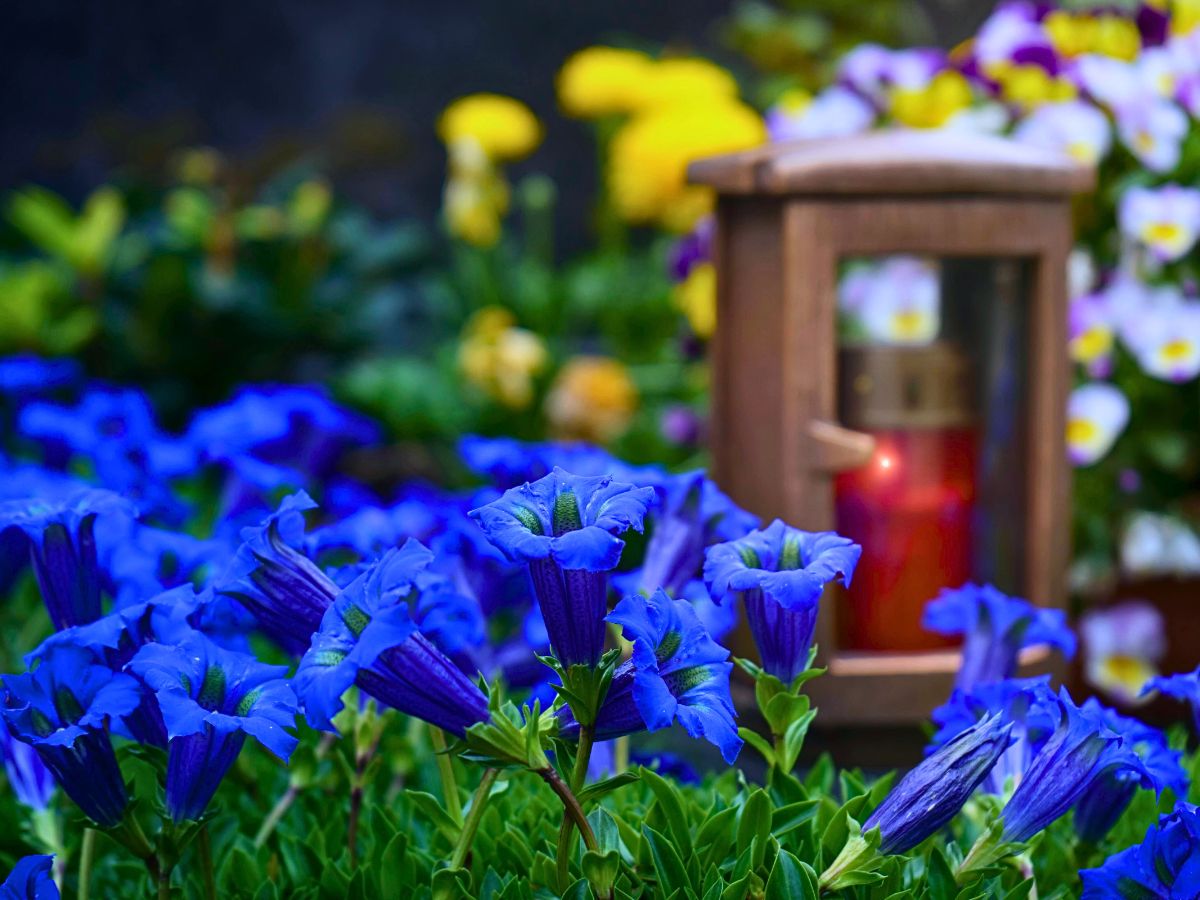
Photo by Johannes Plenio
Blue Color Meaning Across Different Regions
The color blue's significance in different philosophies also includes its application in Europe and the U.S., where it is shown to be a favorite of both men and women. It represents a range of symbols, including serenity, tranquility, masculinity, and inspiration.
In Asia, it signifies masculinity in some parts of the region and the birth of a baby boy. In China, however, blue is associated with femininity. Blue also embodies heaven on earth, immortality, and spirituality. In some cultures of the Middle East, it is a symbol of safety and security, while in Judaism, it represents holiness.
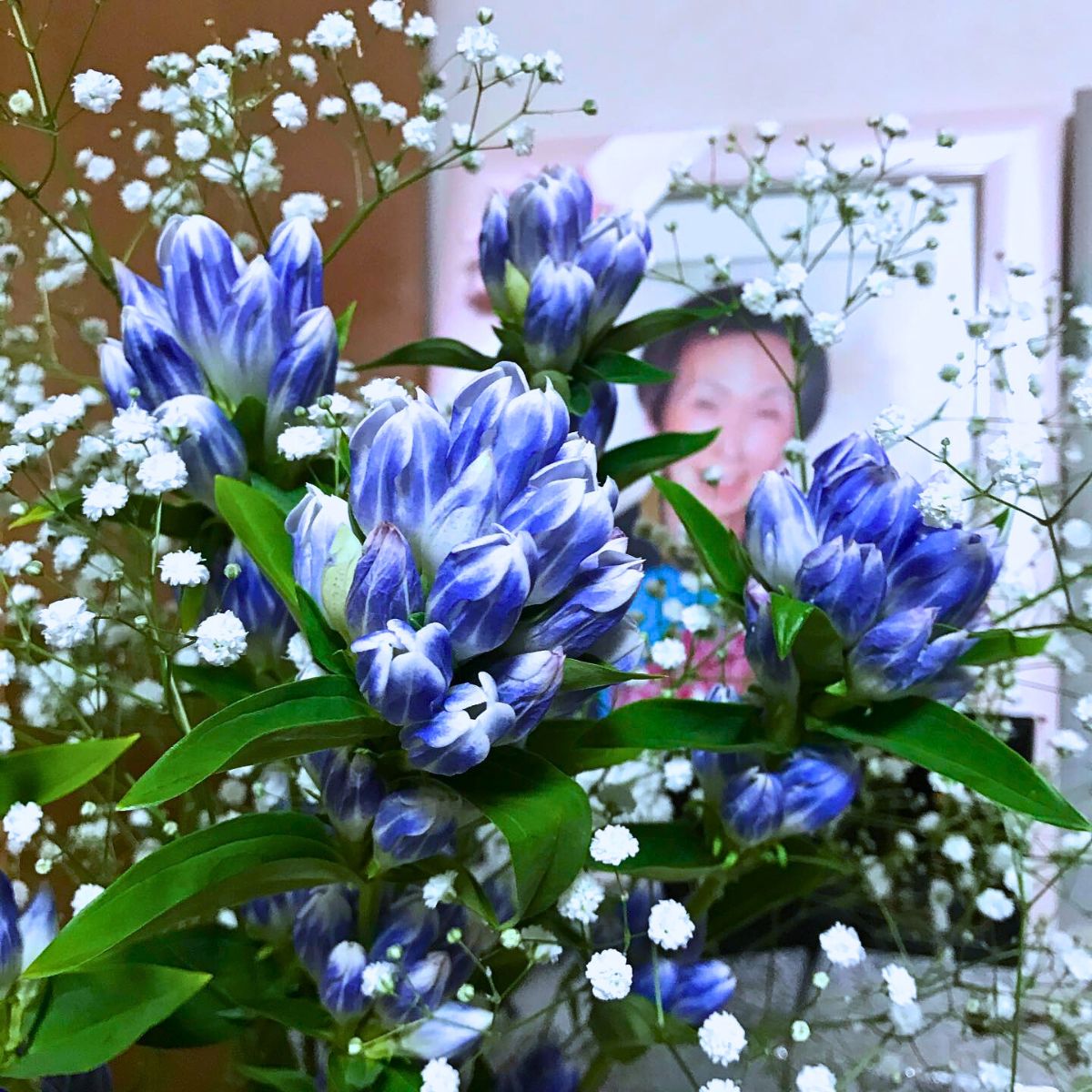
Photo by @kazuko_m_s
In Latin America, blue flowers are often associated with divinity and purity in the region’s mostly Catholic countries. The color also represents wealth, hope, and good health.
Blue flowers suit a range of occasions because of their versatile nature. They can, therefore, be gifted for romantic gestures, anniversaries, achievements, and congratulations and used in a host of other rituals, festivities, and observances. Their soothing nature makes them an ideal get-well gift, while their spiritual associations make them suitable for meditation and self-discovery.
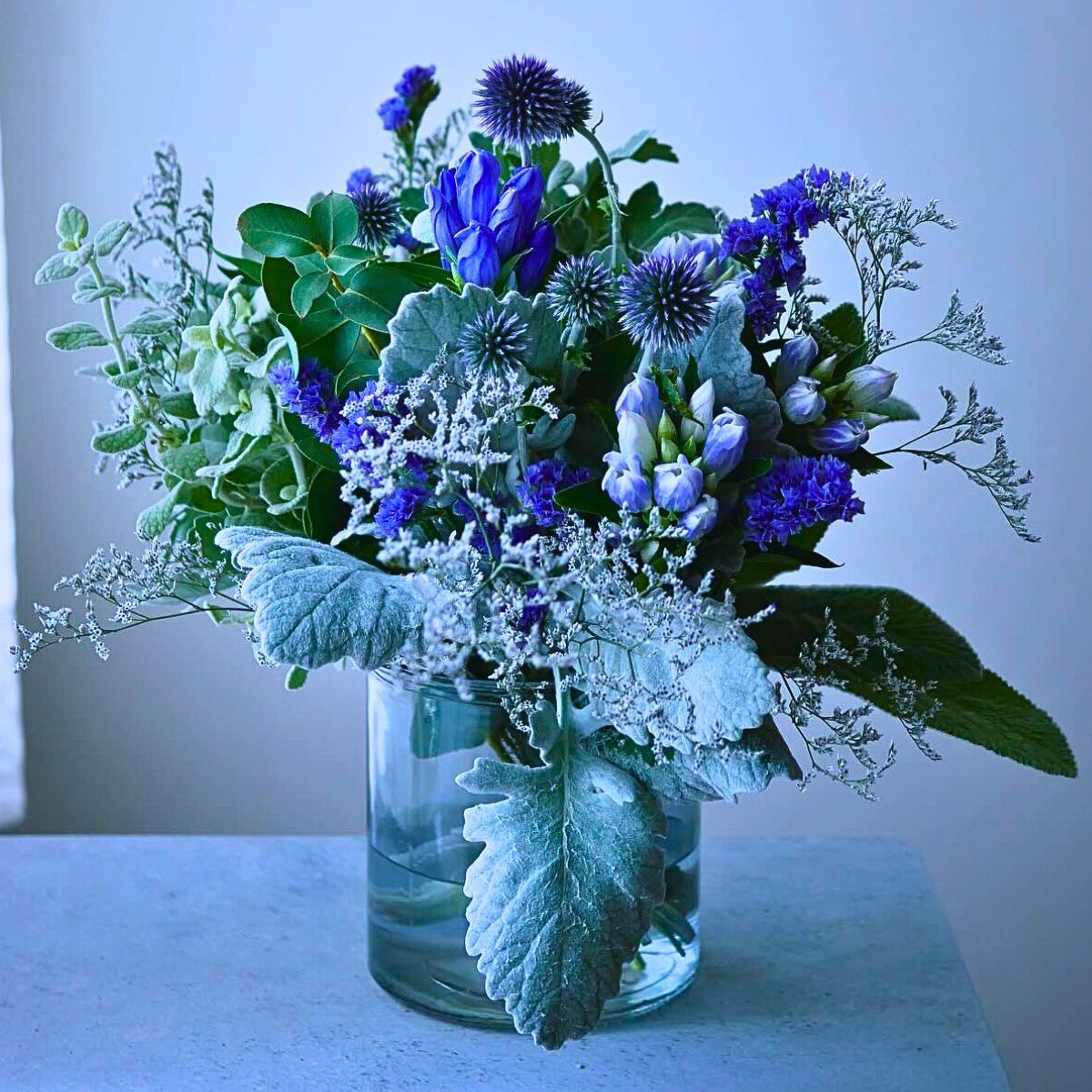
The Rarity of Blue Flowers, Hence the Allure and Persistent Fascination With Them
A key factor contributing to the fascination and allure of blue flowers is their relative rarity in the natural world. True blue flowers, not the result of genetic modification or dyeing processes, are remarkably uncommon. This scarcity has only helped to heighten the mystique and desirability of these beautiful blooms.
The difficulty in cultivating true blue flowers has led to the development of various techniques, such as genetic engineering and hybridization, to create these elusive hues. Several breeders have made significant strides in producing genetically modified blue roses, though the resulting colors often lean more towards lavender or mauve than true blue.
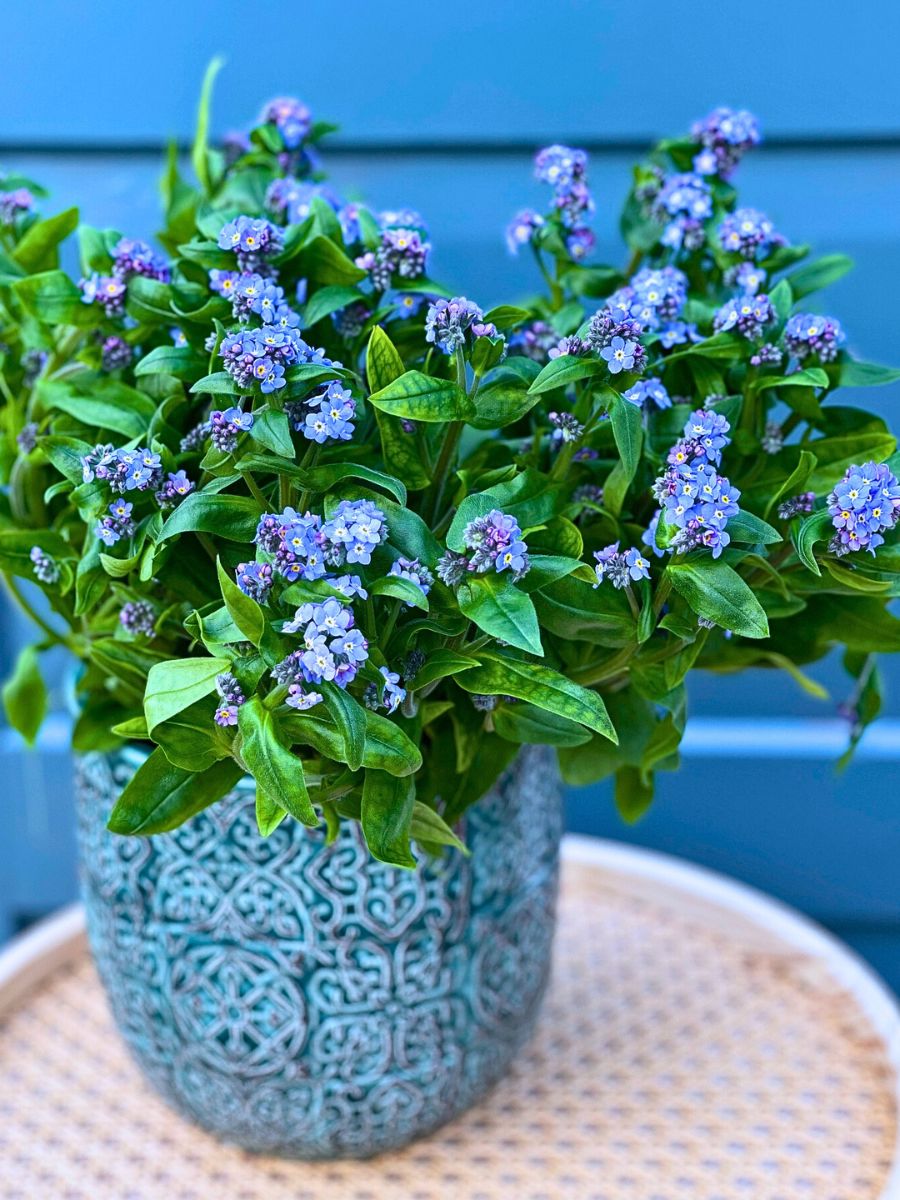
This rarity and the efforts required to produce blue flowers have added a layer of exclusivity and preciousness to them. Thus, being gifted a bouquet of blue flowers, whether naturally occurring or artificially created, can be seen as a special gesture, a thoughtful sign conveying the giver's wish to offer something unique and extraordinary.
Blue Flowers Exemplify This Versatile Shade
The meaning of the color blue is multifaceted. Blue is ubiquitous in modern life; thus, many polls show it is the most popular color worldwide. It is a serene shade that often creates calm, peace, and serenity.
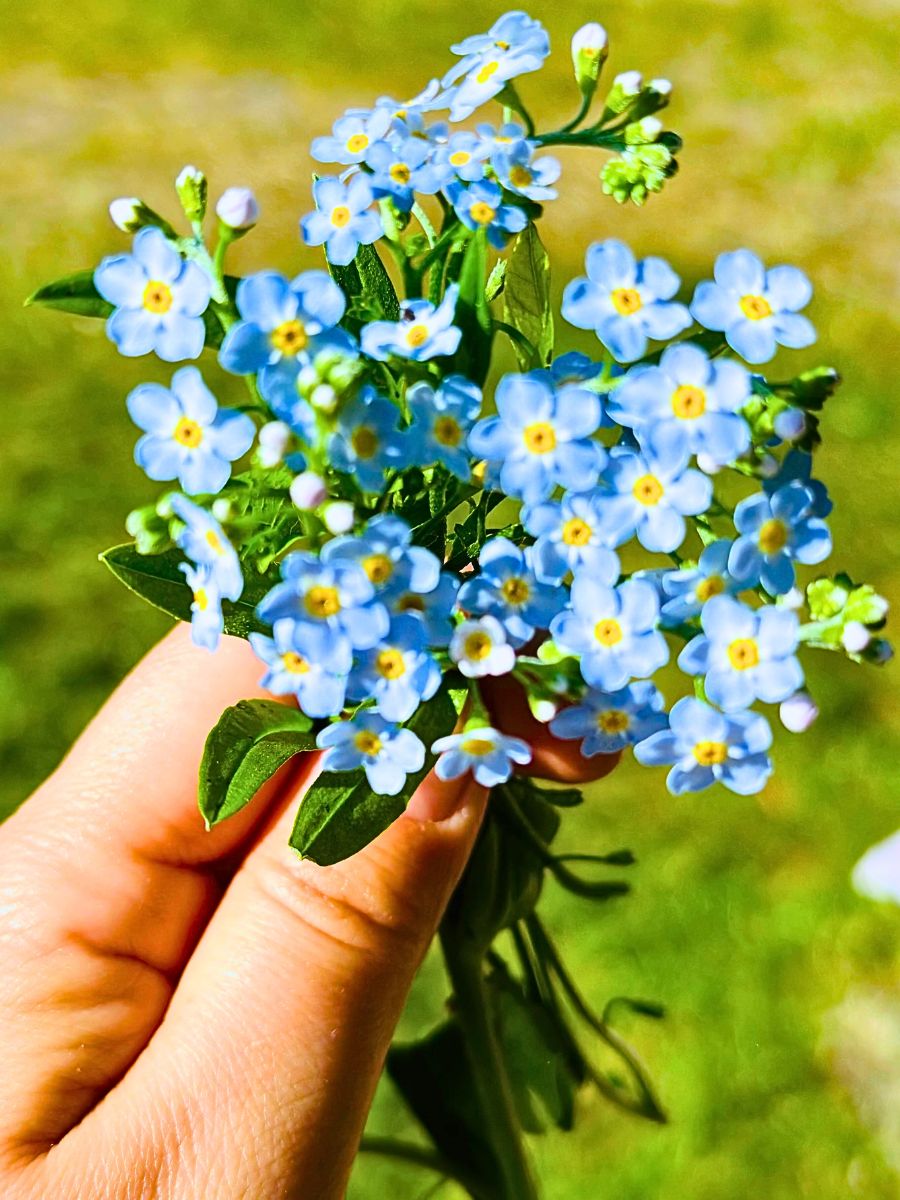
Photo by Елена Рудакова
In the language of color, blue also has diverse associations across different people, societies, and cultures, ranging from tranquility, masculinity, inspiration, hope, and sympathy, to divinity, heavenliness, spirituality, intimacy, safety, trust, and openness.
Feature image by @u_chibito, header image by JUNICHI NAGAMI

